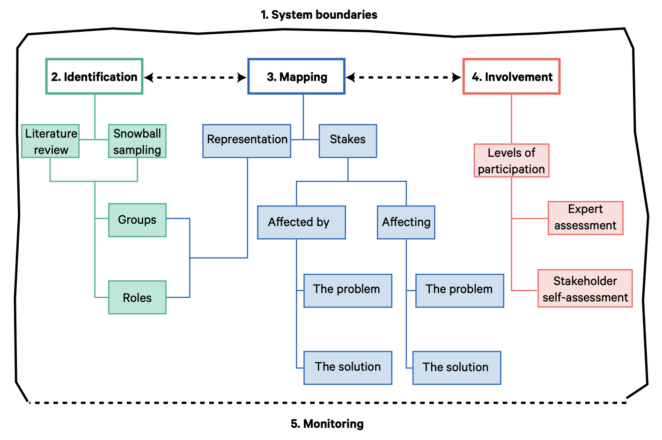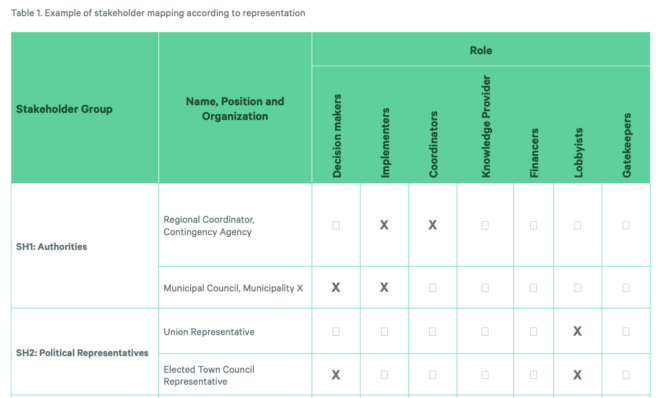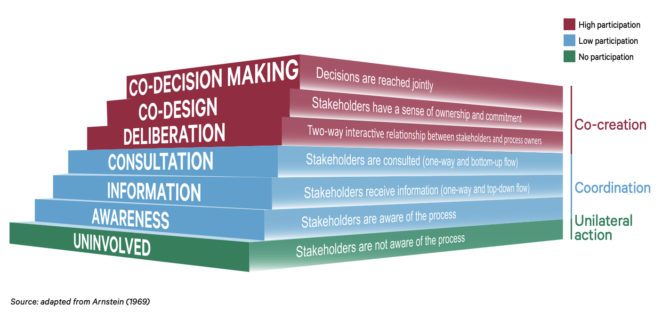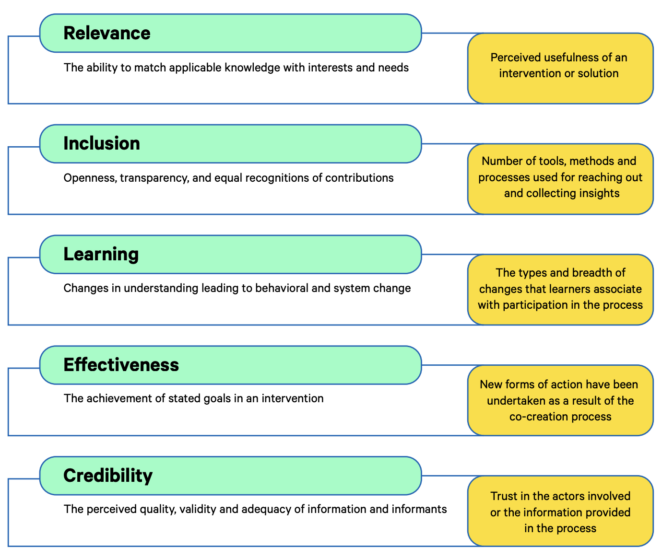MapStakes: A tool for co-creation processes

This tool is part of the SEI Urban Toolbox for Liveable Cities which has been developed by the SEI Initiative on City Health and Wellbeing.The Urban Toolbox isa collection of tools, developed within SEI or in coordination with SEI,aimed at supporting planning and decision-making for improving the health, well-being and resilience of city residents and urban systems more broadly.
About this tool
This Urban Toolbox article is an abridged version of the original SEI report, which can be downloaded from the right-hand column. Please access the original text for more detail, research purposes, full references, or to quote text.
Despite widespread use of stakeholder approaches in environmental research, the tools and methodologies for mapping and involving actors are not particularly robust. Existing approaches can lead to methodological ambiguity, limited transparency in the process of stakeholder selection, and lack of robustness when monitoring and evaluating these processes. To respond to these challenges, this tool was developed for increasing objectivity of stakeholder mapping, engagement, and monitoring of co-creation processes. The tool provides a stepwise approach for users with little or no experience of participatory methods.
How does this tool work?
MapStakes consists of 5 steps: (1) defining system boundaries; (2) identifying stakeholders; (3) mapping stakeholders; (4) involving stakeholders; (5) monitoring involvement. Through these steps it aims for stakeholder identification and mapping to be better connected to value creation and the possibilities to create better and more lasting outcomes. This includes awareness, the possibility of identifying and using windows of opportunity more actively through stakeholder interaction, improving data sharing across research projects, contributing to institutional cooperation through “softer” means, or connecting local challenges to regional agendas (e.g. EU entry, climate adaptation goals, achieving the Sustainable Development Goals, etc.).
Who might use this tool?
This tool has been designed for users who may not necessarily be experts in stakeholder theory or participatory methods.
Which stakeholders are involved?
Stakeholders relevant to the defined topic area – can range from policymakers, research communities, civil societies, NGOs, authorities, the private sector etc.
What stage of the process does this tool support?
- Defining the issue
- Generating ideas
- Developing solutions
- Implementation
- Monitoring
- Evaluation
Tool overview

Step 1: Defining system boundaries
System boundaries define the system and what is included, excluded and marginalized and why (Midgley, 2003). Boundaries can be jurisdictional (e.g. a city), sectoral (e.g. energy), institutional (e.g. municipalities), conceptual (e.g. nature-based solutions), scalar (e.g. landscape), temporal (e.g. present), and spatial (including social space or absolute space).
Boundaries define the stakeholders that will be identified as relevant to the process and hence represent the first criteria for inclusion and exclusion (Lyon et al., 2020). The boundaries initially set by researchers can sometimes be interpreted differently by stakeholders (Mehrizi et al., 2009). Therefore, discussing the system with stakeholders is necessary to have a common understanding of what is being assessed.
Step 2: Identifying stakeholders
In a co-creation process, there is a need to go beyond researchers’ (or the person doing the mapping) own networks. This can be done through literature or document reviews and snowball sampling, for instance of experts in the field and according to predefined groups and roles. In a mapping exercise, stakeholders only represent one stakeholder group to avoid conflict of interests. Stakeholders should either represent themselves or a segment of society.
A more robust tracking of stakeholders’ groups and roles can reveal biases in the identification process. For example, it could be the case that there are more stakeholders involved in decision-making positions while actors potentially affected by the problem are underrepresented. This identification can also help rethink the engagement process to identify gaps in representation.
Step 3: Mapping stakeholders
To increase accessibility of the approach, we suggest two rather simple methodologies: according to representation (Table 1) and according to influence (Figure 2).
Notice how stakeholders only represent one group but may play different roles:

A rainbow diagram can help analyse the extent to which stakeholders:
a). affect the problem and the solution
b). are affected by the problem and the solution

Results from this methodology help assess whether the most influential or influenced stakeholders are being included in the stakeholder map. Outputs from the process are highly dependent on the selection of participants and the process design. Unbalanced representation will skew results in favor of the over-represented group
Step 4: Involving stakeholders
The fourth step helps to assess the level of involvement or participation required and desired by each stakeholder. This addresses the questions: how much should stakeholders be involved and when, according to experts? And how much and in what way do stakeholders want to be involved? These questions require consideration by “process owners” – the individual(s) carrying out the mapping exercise.
Figure 3 depicts an adapted version of a typology of participation developed by Arnstein (1969) and further developed by Basco-Carrera et al. (2017). It includes one level of non-participation (uninvolved), three levels of low participation (awareness, information, and consultation) and three levels of high participation that relate to different stages in a co-creation process (deliberation, co-design and co-decision-making).

Step 5: Monitoring involvement
Co-creation can be highly resource intensive, and therefore it can be challenging to engage stakeholders throughout a process, despite its popularity. Thus, more evidence is needed to assess the impact and effectiveness of different aspects of co-creation processes. We devised a set of criteria, – relevance, inclusion, learning, effectiveness, and credibility (RILEC) – that captures a number of dimensions that are relevant for assessing the role of cocreation in a process, project, or intervention:
- Relevance –refers to the ability to match applicable knowledge with interests and needs.
- Inclusion –refers to whether co-creation led to an inclusive process characterized by openness and transparency, and where equal recognition was granted to all contributions.
- Learning –refers to changes in perceptions and behaviors at the level of individuals that lead to changes in practice within wider networks and systems.
- Effectiveness – relates the results of activities to the achievement of objectives and responds to the question, “are we doing the right things?”
- Credibility –can be understood as the perceived quality, validity, and adequacy of the information (source credibility) or the informant(s) exchanging information (actor credibility).
This proposed framework is not only relevant for evaluating co-creation processes at the end of a project, but also to regularly monitoring them.

Capabilities and resources required
This tool has been designed for those with little prior experience in stakeholder engagement. Thus no capabilities are required.
Potential integration with other tools
MapStakes can be used alongside and to inform other participatory approaches, such as focus groups, workshops, interviews, and citizen science.
Suggested Citation:
Barquet, K., Segnestam, L. and Dickin, S. (2022).MapStakes: A Tool for Mapping, Involving and Monitoring Stakeholders in Co-Creation Processes. SEI report. Stockholm Environment Institute, Stockholm. http://doi.org/10.51414/sei2022.014
(0) Comments
There is no content